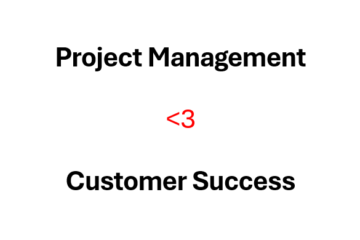What Drives You? A Look At The Power of Motivation, From External Rewards to Internal Fulfillment
Today’s blog is a reflection on a podcast that I listened to during my walk this afternoon. If you read the blog about the benefits of walking with Pacer, I had a list of podcasts to listen to when going for a walk and one was the Daily Boost Podcast. On my short walk in the cold this afternoon, I listened to the Daily Boost Podcast and learned about the different types of Motivation. I enjoyed today’s podcast and wanted to share it with you as well.
Motivation has been on my mind a lot recently and I am determined to remain focused on it in 2023. I have some goals that I want to leverage the power of motivation to achieve this year. One has been to bring this Sandbox back on and start writing again. There are some bigger projects that I have planned for 2023 that I hope to complete! So you may see a few more posts about the power of motivation here throughout the year.
Motivation is a driving force that compels us to take action toward achieving our goals. It can come from both internal and external factors, and understanding the different types of motivation can help us better understand why we do what we do.
There are four types of motivation: extrinsic, intrinsic, introjected, and identified. Let’s see what each means.
Extrinsic Motivation
- Extrinsic motivation comes from outside of you, such as rewards or punishments. You do it because you are compelled to – usually by someone else. Examples of extrinsic motivation include a promotion at work, a salary increase, or a bonus for meeting a sales target. Extrinsic motivation can be effective in the short term but may not be sustainable in the long term. But ignoring the value of extrinsic motivation can have adverse effects on other forms of motivation. For example, failing to acknowledge an employee’s well-deserved recognition or delaying a well-deserved promotion can result in a loss of interest from the employees.
Intrinsic Motivation
- Intrinsic motivation is done for internal and personal reasons. This can be called your WHY. You do something because it aligns with your personal values, interests, and goals. Examples of intrinsic motivation include pursuing a hobby, volunteering, or working on a project that you are passionate about. Intrinsic motivation can be sustainable and lead to greater fulfillment and satisfaction as long as your passion is focused within the right context and environment. Being overly passionate in the wrong direction can lead to burnout and discouragement. (examples include bad work culture, inexperienced manager, or wrong the wrong field or industry)
Introjected Motivation
- Introjected motivation is similar to extrinsic motivation, but the difference is that if something is not done, you feel guilty. You do something to avoid negative emotions, such as shame or guilt. Examples of introjected motivation include studying for a test to avoid feeling ashamed of failing or going to the gym to avoid feeling guilty about not exercising. Introjected motivation can be effective in the short term, but it can lead to burnout and a lack of fulfillment in the long term. I thought of this form of motivation as somewhat in line with the carrot principle. You don’t necessarily always need someone else to find your carrot, you can own that decision. I like Chester Elton’s book on this topic, you can check out a short video of him talking about the carrot principle below.
Identified Motivation
- Identified motivation is when you know something needs to be done but have not decided yet. You do something because it aligns with your goals, but you haven’t fully committed to it yet. Examples of identified motivation include deciding to go back to school or start a business, but not taking any action toward those goals yet. Identified motivation can be a good starting point, but it is important to take action to turn it into intrinsic motivation. Reflecting on this type of motivation, I’d like to encourage you to look at the guy in the following video as your motivation. He is an example of someone who takes action on his identified motivation and doesn’t give up until he gets results. The most important part of this form of motivation is the “taking action” part. We all have some sort of a big dream that we are yet waiting for the right time to arrive to take action to realize it. Don’t wait any longer, be the dancing guy of your own story.
In conclusion, understanding the different types of motivation can help us identify why we do what we do and how to maintain motivation in the long term. Extrinsic motivation can be effective in the short term, but intrinsic motivation is more sustainable and fulfilling. Introjected motivation can lead to burnout, while identified motivation is a good starting point but needs action to turn it into intrinsic motivation. I think by identifying motivation types, we can develop strategies to stay motivated and achieve our goals and also better support our family, friends and colleagues in achieving their goals as well.
Last but not least, there is nothing but to hear about all this from the guy whose podcast triggered today’s reflection, take a few moments to watch the Daily Boost Podcast below.




2 Comments
Hoda · 27 March 2023 at 1:24 am
This is the first time I read your post and I love it.
zarapalevani · 29 March 2023 at 6:39 am
Thank you for your comment and for taking the time to read.